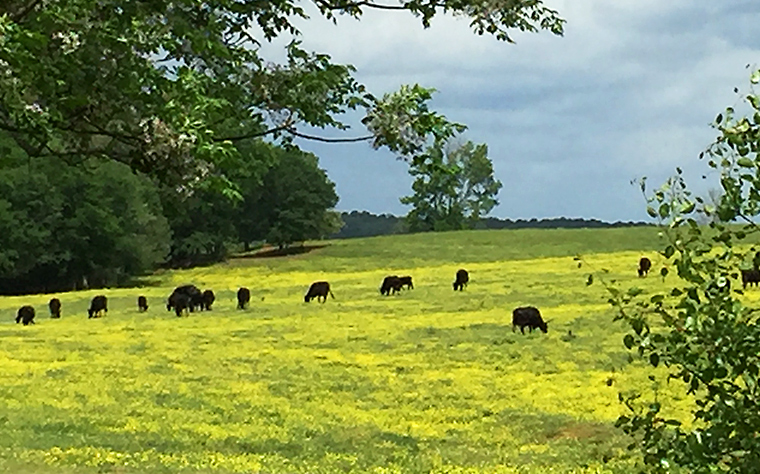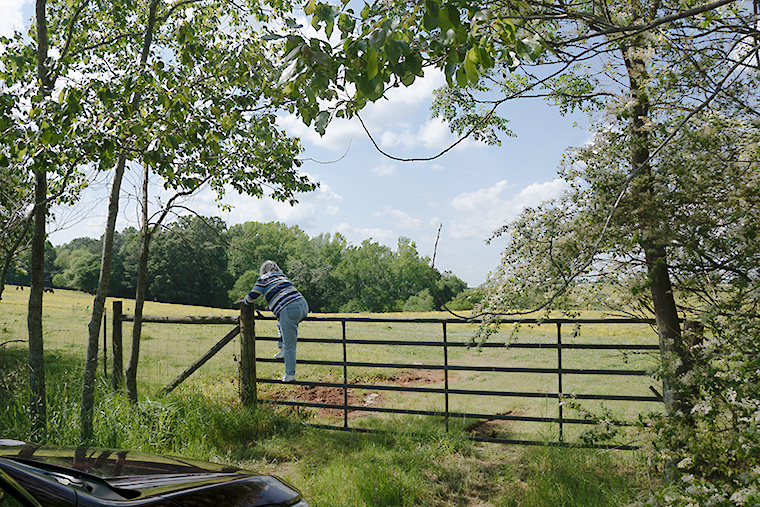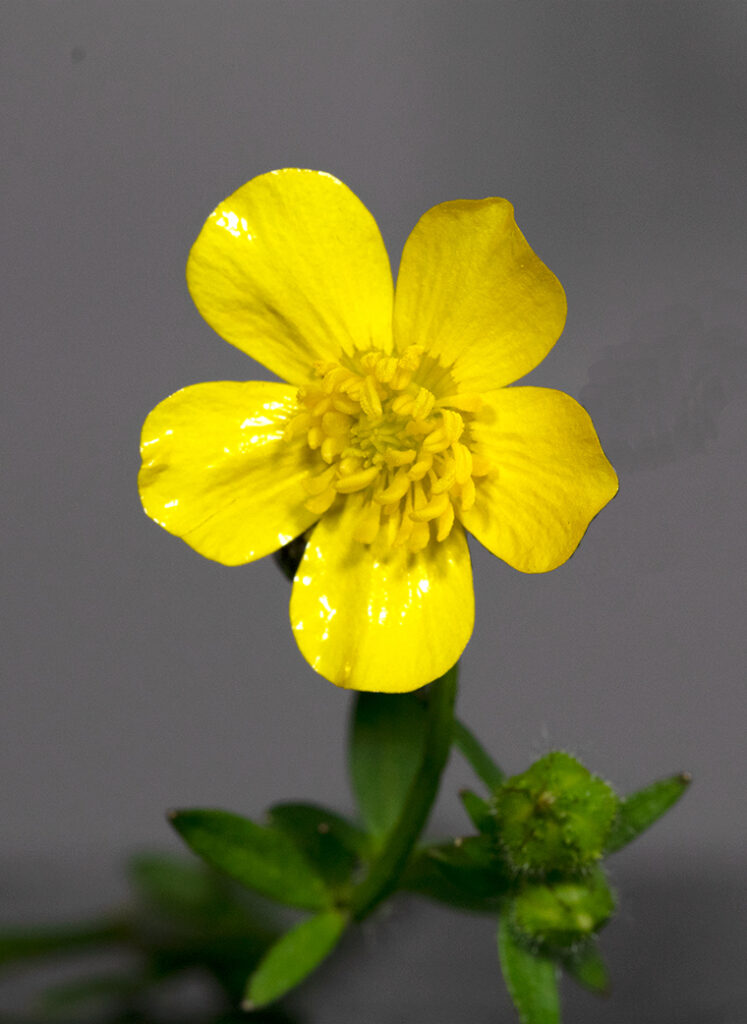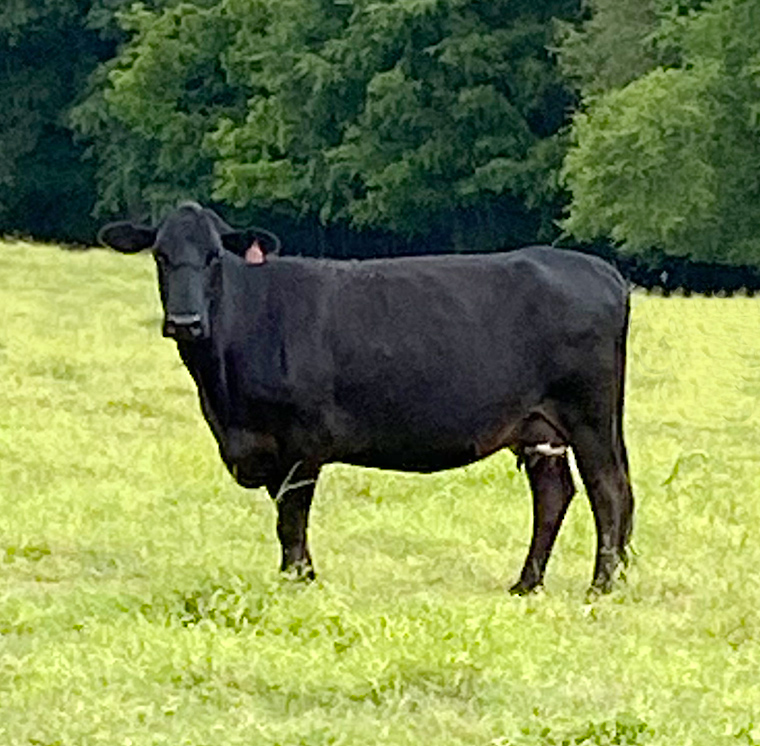
Joyce and I saw this interesting and colorful scene about a mile from our house. The black cows contrasted with the yellow flowers in quite a pleasing way. The cows are so black that they look like cow-shaped holes in the world revealing the blackness underneath.

Joyce was kind (and agile) enough to climb over the fence to retrieve some of the flowers so we could identify them.

The flowers turned out to be a species of Buttercup (Rannunculus sp.). The petals have a pronounced waxy lustre. The flowers are about 1.5 inches across, and each has 5 petals and a large number of stamens.
The genus name Ranunculus means “little frog” in Latin. The Romans may have called these plants little frogs because many of the species grow near water. Buttercup apparently comes from the belief that butter was yellow because cows ate buttercups. In fact these plants are poisonous to cattle. The cows in the first photograph are apparently grazing around the buttercups, but not eating them.

Here is a closer picture of a cow in another field. This is the breed known as the Black Angus or Aberdeen Angus. The breed was developed in the latter part of the 19th century in the far northeastern part of Scotland, primarily in the counties of Aberdeen and Angus. It is a very common beef cow in this country and in many other parts of the world.
The breed book calls for a solid black animal, but some white color is allowed on the udder, which this animal displays. The breed is also always polled (has no horns).
Discover more from A Naturalist's Journal
Subscribe to get the latest posts to your email.

Nice post Gary. I have been enjoying watching the various types of cows and calves in the flowered meadows in N. Georgia. Somehow I though the phenomenon might be just limited to areas ’round here. I hope all is well!
Thanks Gary! Hope you and Joyce are doing well. Think people are tired of isolation and ready to move on. Have a great summer.